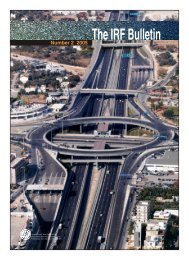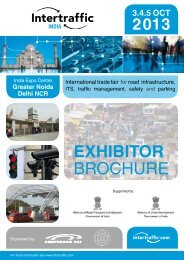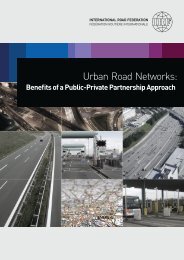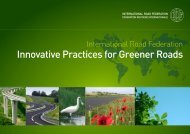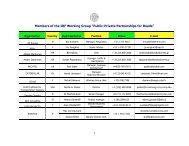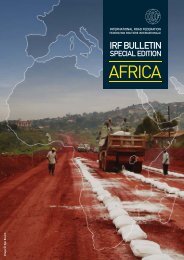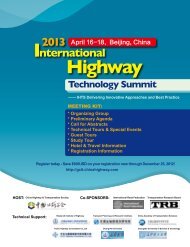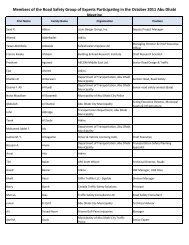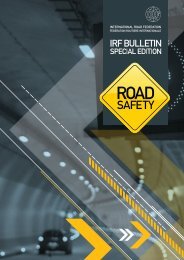TRANSPORT
TRANSPORT
TRANSPORT
- No tags were found...
Create successful ePaper yourself
Turn your PDF publications into a flip-book with our unique Google optimized e-Paper software.
MANAGEMENT<br />
Basic features of an agricultural Supply Chain<br />
markets, they would increase their revenues and improve<br />
their livelihoods.<br />
Supply chains and modern transport logistics<br />
The emerging agricultural markets for high value products<br />
entail severe impacts on marketing, procurement processes,<br />
quality control, warehousing, packaging, logistic chains<br />
and transport. For such products, modern supply chains<br />
are necessary – covering upstream processes, such as<br />
the provision of inputs, as well as downstream transport<br />
logistics from the producer to the final consumer (Figure<br />
1). Thus, they call for high-quality transport services that,<br />
in turn, require major investments in facilities, transport<br />
equipment and management capacity.<br />
exclusively for the high-tech sector. Appropriate cooling<br />
technologies, such as the solar assisted cooling chamber<br />
depicted in Figure 2, might provide low-cost solutions in<br />
poor areas. The evaporative cooler shown can prolong the<br />
life of fresh fruit by two to three weeks.<br />
In order to satisfy the demand from customers and adhere<br />
to quality standards, produce has to undergo a number<br />
of processes, such as pre-cooling, pack line operations,<br />
ripening, degreening and labelling. A well-equipped and<br />
hygienically maintained infrastructural base is a pivotal<br />
support element of the chain. The technological level<br />
must be appropriate to the needs of the target market<br />
and the length and complexity of the chain. For simple<br />
chains, such as where the producer is within hours of the<br />
market, a simple infrastructural base consisting of packing<br />
and well-ventilated transportation facilities is adequate.<br />
For longer, more complex chains, packing houses, cooling<br />
systems and logistical infrastructure – such as refrigerated<br />
transportation, storage/warehousing and containerisation,<br />
supported by appropriate logistical operations – are<br />
required.<br />
Pre-cooling prior to shipment is needed to prevent<br />
quality loss and wilting. Cooling is not a domain reserved<br />
Appropriate cooling technologies in Low-Income Countries<br />
A new concept for regional and transport planning<br />
How can modern supply chains be implemented in a<br />
traditional rural transport market The answer is through an<br />
integrated regional planning approach that encompasses<br />
disciplines such as agriculture, logistics, manufacturing,<br />
transport and business development. On the regional<br />
level, conventional and modern transport chains may be<br />
IRF BULLETIN SPECIAL EDITION: RURAL <strong>TRANSPORT</strong>, VOLUME-2 | 21



